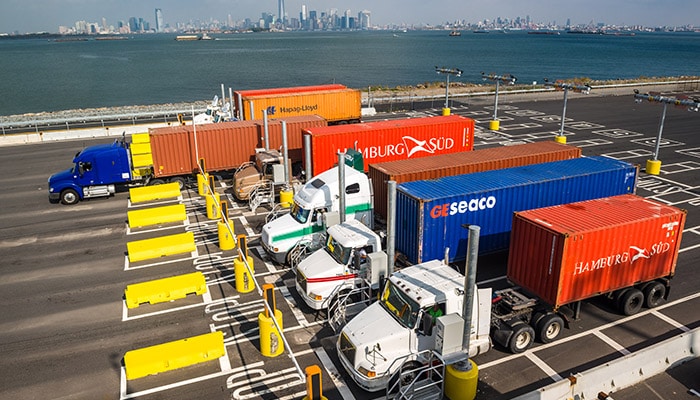How to Choose Drayage Software That Keeps You Ahead of the Game

Here’s a guide through the process of successfully selecting the best drayage software for your business.
Companies using transportation management software (TMS) to automate manual drayage processes have seen dramatic improvements in operational efficiency. But how can you ensure you select the best drayage software for your business?
When evaluating drayage software, it’s essential to consider these key features and functionalities that will directly impact business operations:
Automated container tracking. Enables drayage truckers to monitor the real-time location and status of their containers, whether they are on a vessel or dock, or sitting empty at a yard.
Automated container tracking helps drayage firms proactively address any issues, such as detention and demurrage (per diem), ultimately reducing per-diem charges. Automated container tracking also helps to optimize trips to and from the terminals.
Real-time dispatch and routing. Allows your team to optimize routes and assign jobs to drivers efficiently—in near real time. By providing accurate, up-to-date information on the location of your vehicles and the status of jobs, a TMS can help you reduce operational costs and improve service quality.
Customer support offered by both the software provider and the product. A reliable support team can help troubleshoot issues, provide training, and ensure that your software runs smoothly.
Transitional training and onboarding. Adequate training and onboarding support are essential to ensure a smooth transition from one TMS to another. Solid support is especially necessary for companies moving to TMS from non-software management tools, like spreadsheets.
A good software provider will offer comprehensive training and resources, such as a knowledge center, to help your team get up to speed quickly, which will help reduce downtime and maximize the benefits of the new system.
Tips to Evaluate Drayage Software
Here’s some simple, and practical advice for selecting the best drayage TMS for your business.
1. Assess your current and future needs. Evaluate your current processes around things like dispatching, driver management, and informing customers of freight status, and identify areas for improvement. Software can dramatically improve the workflow for these processes and bring efficiency benefits you’re likely not getting currently.
Consider the future growth of your business and ensure that the software can scale with your needs.
2. Compare features and pricing. Review the features and pricing of various TMS solutions to find the best fit for your budget and operational requirements. Keep in mind that the cheapest option might not always be the best choice in the long run.
3. Request a demo and explore sales engineering. Before committing to a TMS, request a demo from the vendor and spend time with experts within your organization to ensure that the software meets your expectations and is user-friendly. This hands-on experience will also help you identify any potential issues or shortcomings in the system.
Make an Informed Decision
Carefully considering the features and support that various TMS providers offer can help you make an informed decision and choose the best drayage software for your business. The right software will improve efficiency and cost savings and ensure that your operations are well-positioned to adapt to the ever-changing landscape of the shipping industry.
Transportation management systems are bringing technological innovation to drayage firms, helping them make the switch from outdated, manual processes into the modern era of automation. Digitizing operations is an important step, so it’s important to fully research the options and understand the market.
drayOS–PortPro’s leading drayage TMS–is revolutionizing logistics and supply chains by leveraging cutting-edge technology to streamline processes, optimize routing, and enhance end-to-end visibility. PortPro offers innovative platforms that empower businesses to efficiently manage operations, reduce costs, and grow, driving drayage forward into a new era of digital transformation.

